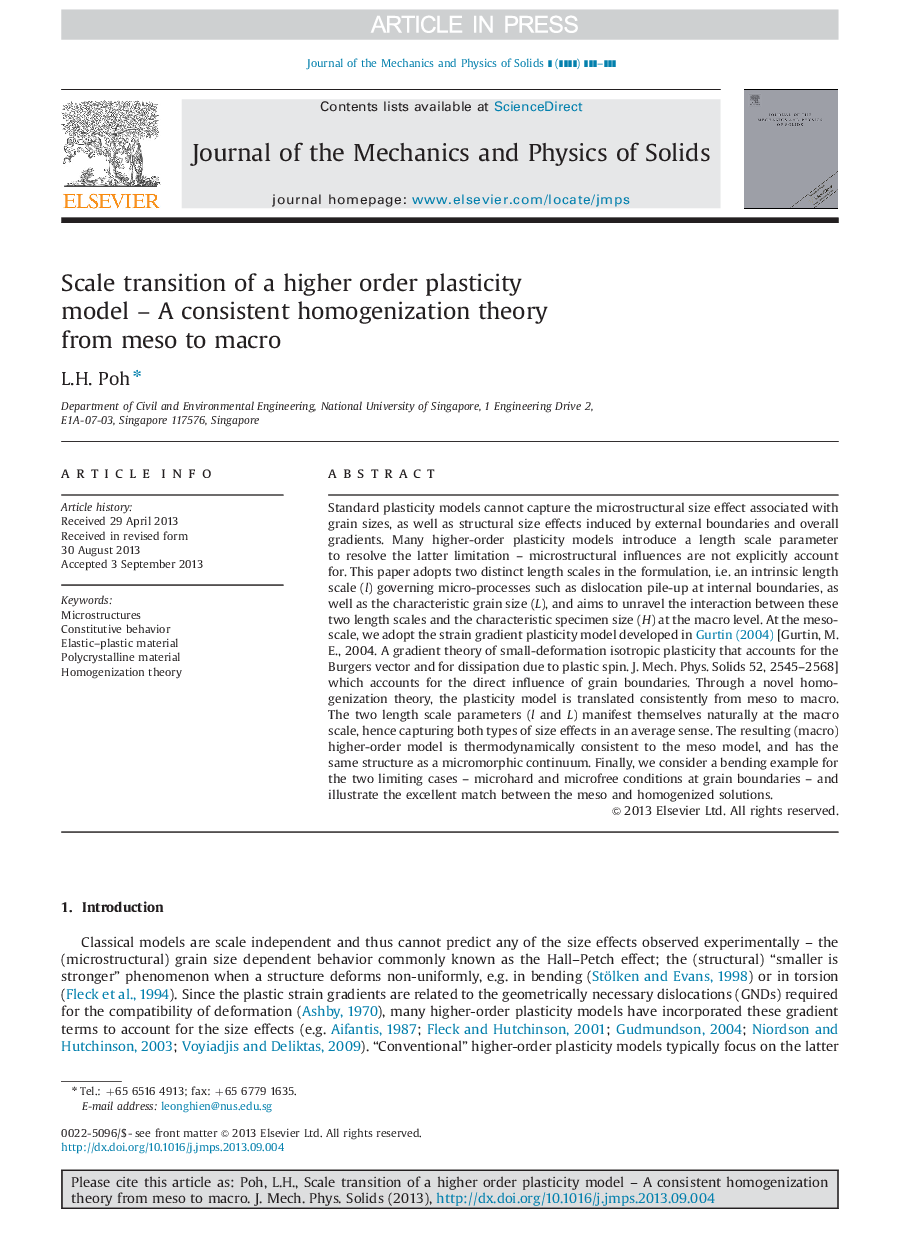| Article ID | Journal | Published Year | Pages | File Type |
|---|---|---|---|---|
| 7178359 | Journal of the Mechanics and Physics of Solids | 2013 | 19 Pages |
Abstract
Standard plasticity models cannot capture the microstructural size effect associated with grain sizes, as well as structural size effects induced by external boundaries and overall gradients. Many higher-order plasticity models introduce a length scale parameter to resolve the latter limitation - microstructural influences are not explicitly account for. This paper adopts two distinct length scales in the formulation, i.e. an intrinsic length scale (l) governing micro-processes such as dislocation pile-up at internal boundaries, as well as the characteristic grain size (L), and aims to unravel the interaction between these two length scales and the characteristic specimen size (H) at the macro level. At the meso-scale, we adopt the strain gradient plasticity model developed in Gurtin (2004) [Gurtin, M.E., 2004. A gradient theory of small-deformation isotropic plasticity that accounts for the Burgers vector and for dissipation due to plastic spin. J. Mech. Phys. Solids 52, 2545-2568] which accounts for the direct influence of grain boundaries. Through a novel homogenization theory, the plasticity model is translated consistently from meso to macro. The two length scale parameters (l and L) manifest themselves naturally at the macro scale, hence capturing both types of size effects in an average sense. The resulting (macro) higher-order model is thermodynamically consistent to the meso model, and has the same structure as a micromorphic continuum. Finally, we consider a bending example for the two limiting cases - microhard and microfree conditions at grain boundaries - and illustrate the excellent match between the meso and homogenized solutions.
Keywords
Related Topics
Physical Sciences and Engineering
Engineering
Mechanical Engineering
Authors
L.H. Poh,
